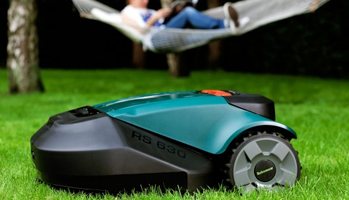Spring has finally arrived, which means it’s time to prepare your lawn for the upcoming season. Our garden lawns are the ‘go to place’ for outdoor summer activities, such as hosting parties and providing a space for relaxation, play, and dining. So to set your lawn up for the summer, follow these practical tips for the first cut:
1. Clear up beforehand
After months of bad weather, remove any debris like dead sticks, leaves, and rubbish. Check for stones and thick branches hidden in the grass that can damage the lawnmower blade.
2. Timing is key
In the first two weeks of April, it’s usually the best time to give your garden lawn a good trim. However, the timing can vary depending on your location.
3. Follow the “one third” rule
When mowing for the first time, never cut more than a third of the grass blade. Gradually reduce the grass length over a few weeks to avoid stressing the grass and prevent disease and weed infestation.
4. For longer grass
If your lawn has grown longer than desired, still follow the one third rule but decrease the cutting height gradually over multiple weeks until you reach your preferred length.
5. Pay attention to the edges
Trim the edges of your lawn after mowing to avoid a messy appearance and wasted effort.
6. Consider new grass seeds
If you’ve recently repaired your lawn with new grass seeds, wait until it has grown over three inches in length before mowing to allow it to strengthen.
7. Make it a habit
After the first cut, maintain the desired grass length by mowing once or twice a week, as warm weather encourages grass growth.
8. Choose the right equipment
Consider the condition and size of your lawn, as well as your gardening needs, when selecting a lawnmower.
By following these tips, you can ensure that your lawn is ready for a summer of enjoyment. If you need any help or advice on whether your lawnmower or ride-on-mower is ready for the new season then please call us on 01403 283814 and we’ll be delighted to help.
 Your robot lawnmower can cope with any shaped garden including slopes and garden furniture such as tables, chairs and even trampolines. The environmental benefit is that all robot mowers mulch the grass they cut, shredding it finely and scattering the cuttings back onto the lawn to feed the soil with nutrients and protect the grass from drought.
Your robot lawnmower can cope with any shaped garden including slopes and garden furniture such as tables, chairs and even trampolines. The environmental benefit is that all robot mowers mulch the grass they cut, shredding it finely and scattering the cuttings back onto the lawn to feed the soil with nutrients and protect the grass from drought.